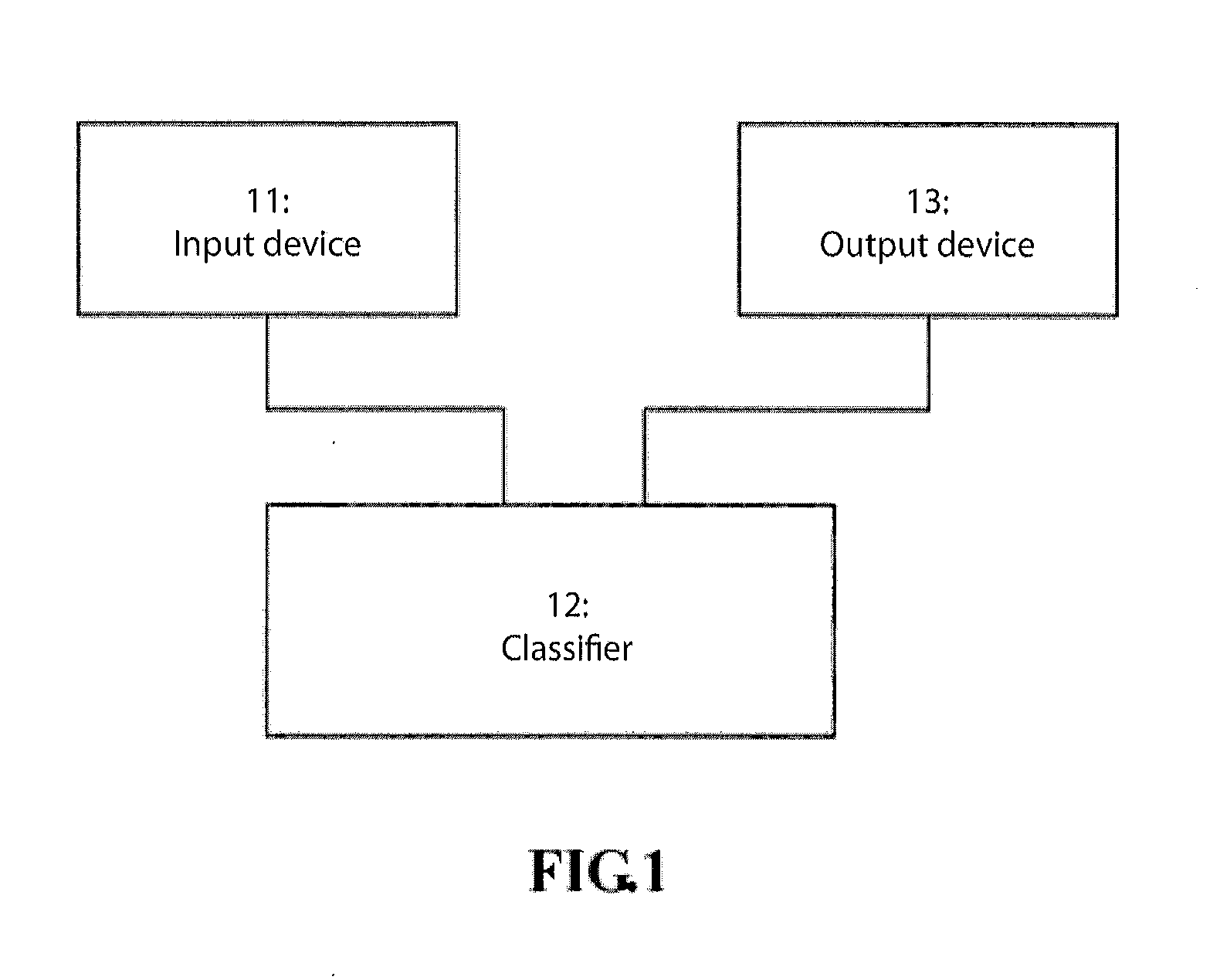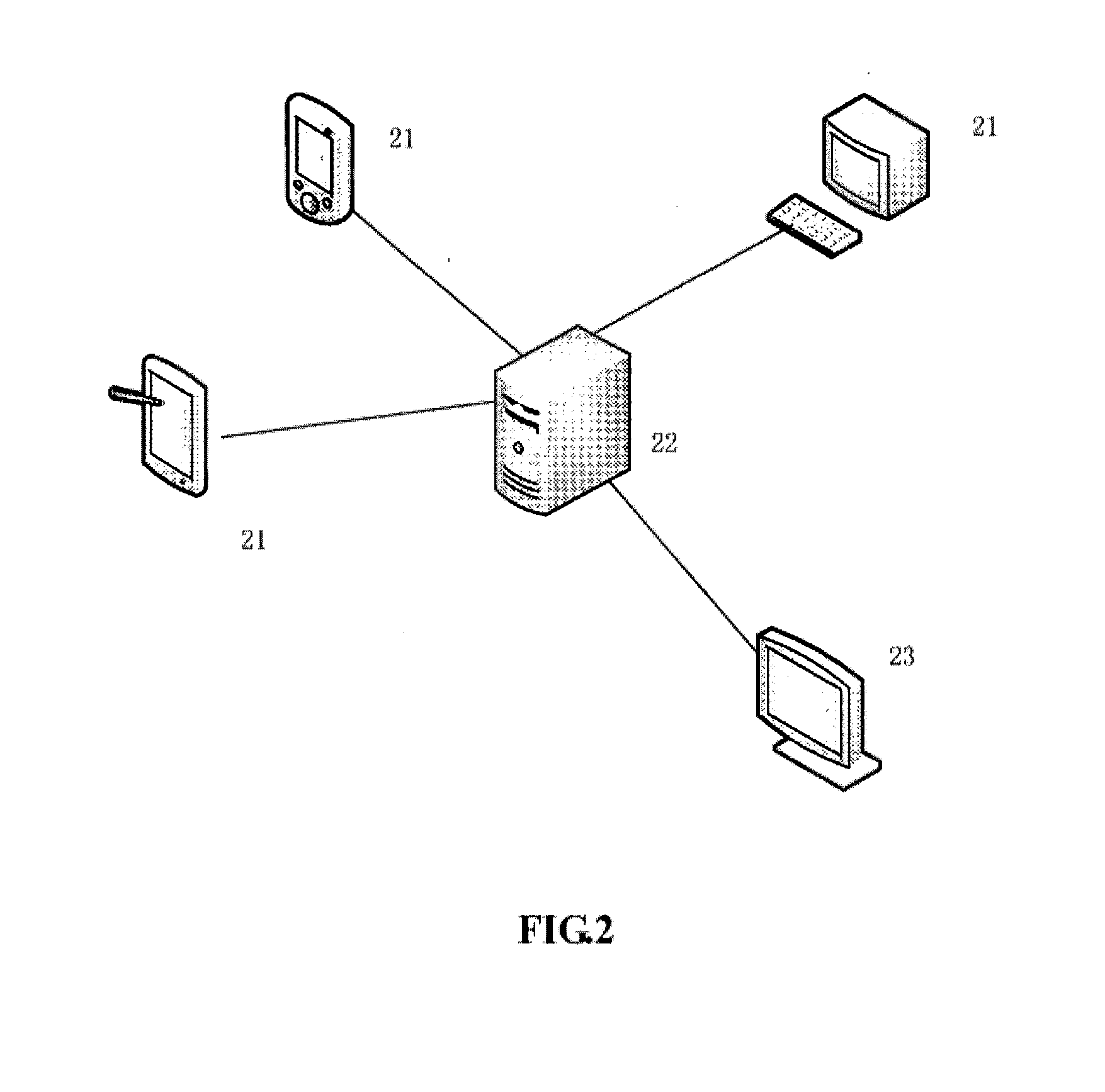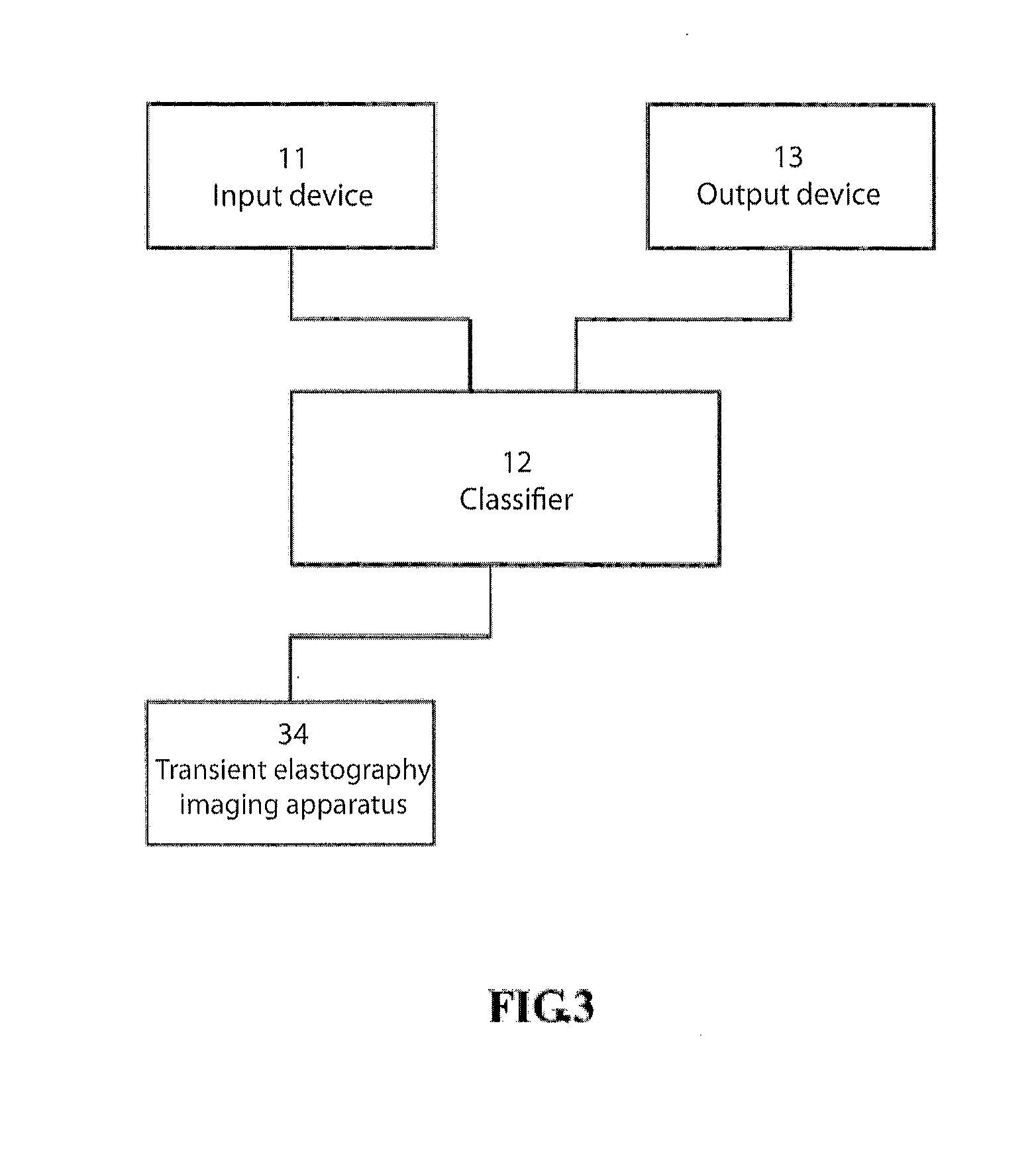Hepatic fibrosis detection apparatus and system
a detection apparatus and a technology for hepatic fibrosis, applied in the field of hepatic fibrosis research techniques, can solve the problems of low accuracy and sensitivity, long recovery time of patients, safety issues, etc., and achieve the effect of improving detection accuracy, sensitivity and specificity
- Summary
- Abstract
- Description
- Claims
- Application Information
AI Technical Summary
Benefits of technology
Problems solved by technology
Method used
Image
Examples
first embodiment
[0038]FIG. 1 shows the structural diagram of the hepatic fibrosis detection apparatus according to the present invention. As shown in FIG. 1, the hepatic fibrosis detection apparatus in this embodiment comprises an input device 11, a classifier 12 and an output device 13. Wherein, the input device 11 is used to receive age and serum biochemical variables, and the serum biochemical variables include at least the blood platelet, hyaluronic acid (HA), serum direct bilirubin (DBIL), prothrombin time (PT), serum glutamic pyruvic transaminase (ALT; GPT) and serum glutamic oxaloacetic transaminase (AST; GOT) . The classifier 12 performs hepatic fibrosis staging according to the age and serum biochemical variables received by the input device 11, and sends the hepatic fibrosis staging result to the output device 13. According to the three received variables, namely blood platelet, serum glutamic pyruvic transaminase (ALT; GPT) and serum glutamic oxaloacetic transaminase (AST; GOT), the clas...
second embodiment
[0044]FIG. 2 shows the structural diagram of the hepatic fibrosis detection apparatus according to the present invention. As shown in FIG. 2, the input device 21 may be a computer, a tablet PG, or a PDA, etc. Equipment as the input device may be connected to the classifier 22 through wire connection or wireless connection etc. The classifier 22 may be a server, a computer or special equipment. The hepatic fibrosis staging result output by the classifier 22 may be output through the output device 23, or be output to the users through the input device 21. The detection apparatus can be realized in the form of an online diagnostic system only by a classifier in the background, which may include a plurality of input terminals and output terminals, so as to achieve detection support by more diagnosis sectors, and reduce the unit detection cost. According to an embodiment of the present invention, the input data of the classifier may include not only age and serum biochemical variables me...
third embodiment
[0045]FIG. 3 shows the structural diagram of the hepatic fibrosis detection system according to the present invention. As shown in FIG. 3, hepatic fibrosis detection system in this embodiment comprises an input device 31, a classifier 32, an output device 33 and a transient elastography imaging apparatus 34. Please refer to the description of the above embodiments for the input device 31 and output device 33, which are not illustrated in detail here for simplicity. Transient elastography imaging apparatus 34 can be used to obtain transient elastography imaging data of the liver tissue; the classifier 33 receives transient elastography imaging data of the liver tissue from the transient elastography imaging apparatus 34, and performs hepatic fibrosis staging based on age, serum biochemical variables and transient elastography imaging data of the liver tissue. Transient elastography imaging apparatus 34, FibroScan for instance, can be used to obtain FibroScan stiffness value of the li...
PUM
 Login to View More
Login to View More Abstract
Description
Claims
Application Information
 Login to View More
Login to View More - R&D
- Intellectual Property
- Life Sciences
- Materials
- Tech Scout
- Unparalleled Data Quality
- Higher Quality Content
- 60% Fewer Hallucinations
Browse by: Latest US Patents, China's latest patents, Technical Efficacy Thesaurus, Application Domain, Technology Topic, Popular Technical Reports.
© 2025 PatSnap. All rights reserved.Legal|Privacy policy|Modern Slavery Act Transparency Statement|Sitemap|About US| Contact US: help@patsnap.com



